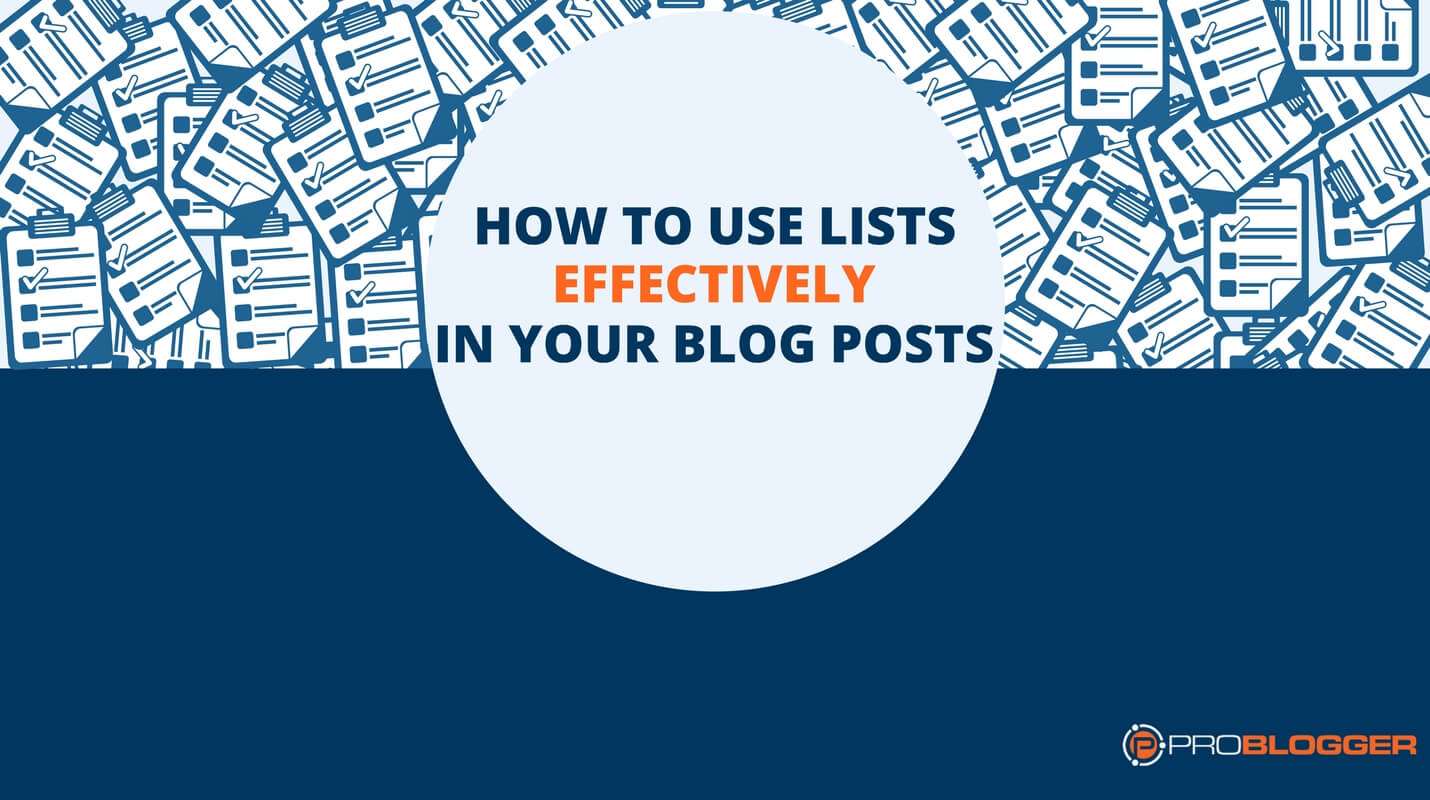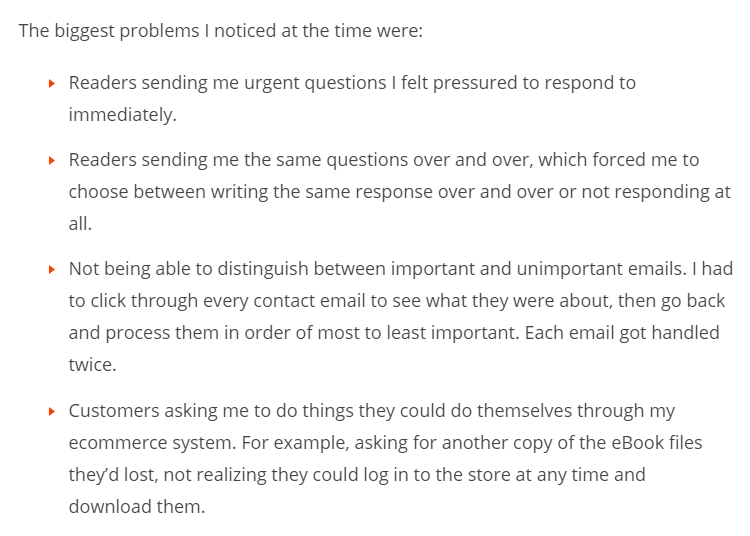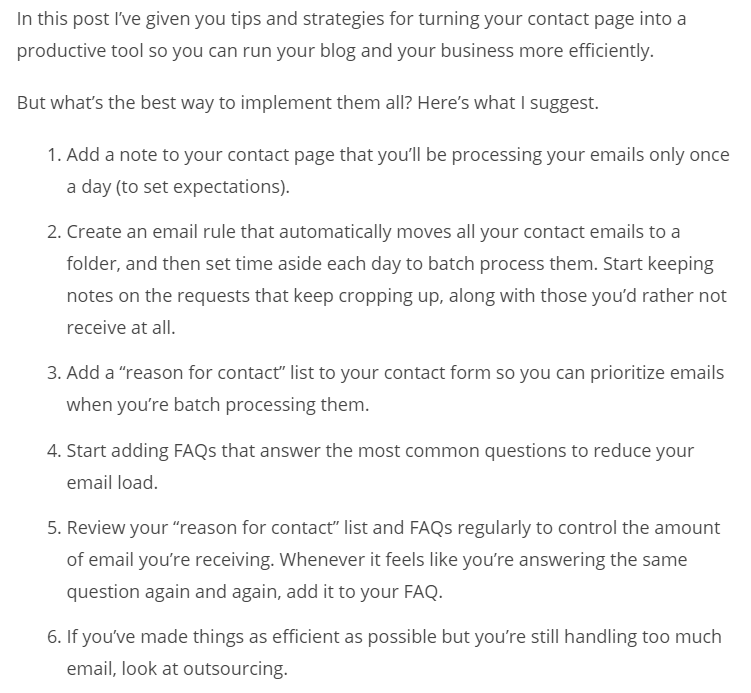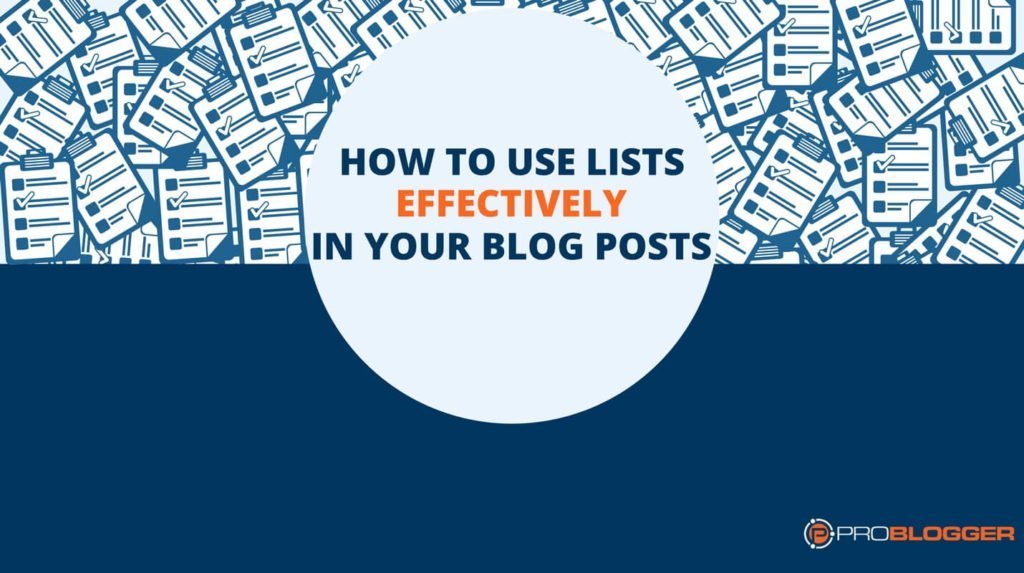 I expect you’re already familiar with the ‘list post’.
I expect you’re already familiar with the ‘list post’.
Even if you’ve never written one, you’ll have read plenty – such as Nicole Avery’s recent post on 5 Tips to Help You Consume Content More Productively. Some sites, including List 25, publish nothing but list posts.
But lists can be useful in any post. Even if they form only a small part of the post, they can still be a crucial tool in making your post more readable and conveying information more effectively.
Why Use Lists at All?
If you’ve written essays at school or university, you may have been taught to avoid using bulleted lists. But when you’re writing for a general audience, lists make it easier to take information in. They can also create a more informal and friendly feel.
For instance, compare these two paragraphs:
Version 1:
Some useful tools for new bloggers are Google Docs, which lets you work collaboratively on blog posts; Dropbox, which stores your files in ‘the cloud’ so you can access them from any computer; Audacity, which podcasters often use to edit audio files; and WordPress (of course), which is the most popular blogging platform in the world.
Version 2:
Some useful tools for new bloggers are:
- Google Docs, which lets you work collaboratively on blog posts
- Dropbox, which stores your files in ‘the cloud’ so you can access them from any computer
- Audacity, which podcasters often use to edit audio files
- WordPress (of course), which is the most popular blogging platform in the world
The text is practically identical in both versions. But the second version is much easier to read – especially if the reader is skimming, as they can easily pick out the four tools at the start of the four bullet points.
As you can see, lists also create extra blank space (known as ‘white space’) at the start and end of each line.
Here’s a great example of using a list in a blog post. In How to Create an Efficient Contact Page That Boosts Your Productivity, Paul Cunningham lists separate problems using bullet points:

This makes it easier to distinguish the different problems Paul was facing. And while some of the bullet points are quite long, they’re much easier to read than if they’d been squashed up into a single paragraph.
Unordered vs Ordered Lists
An unordered list uses bullet points rather than numbers, as Paul used in his post. It looks like this:
I’m calling it an ‘unordered list’ because that’s the term used in HTML code. To create this type of list in HTML you use <ul> for the opening tag, and </ul> for the closing tag. (In WordPress, and almost every other blogging system, you can create the list by simply clicking a button in the visual editor to.)
An ordered list uses numbers. It looks like this:
- Bread
- Milk
- Eggs
Again, ‘ordered list’ is the term used in HTML – <ol> for the opening tag, and </ul> for the closing tag. Of course, as with unordered lists, you can easily create them with the visual editor.
Whenever you’re including a list in one of your posts, think about which type makes most sense: ordered or unordered.
Paul’s blog post also has a list of suggested steps near the end, which he’s formatted by using an ordered list:

Using numbers makes sense here, as Paul is recommending the reader carry out the steps in this order. But if he offered several distinct ideas the reader could pick and choose from, bullet points would work best.
Formatting Your Lists Correctly and Consistently
While writing a list isn’t hard, some bloggers make mistakes with grammar and punctuation. Here are some simple rules of thumb to follow:
- Each item on your list should start with a capital letter.
- The introduction to your list (e.g. “The biggest problems I noticed at the time were:”) needs to fit with each item on the list. Try reading the introduction and each list item together as a complete sentence to make sure they all work grammatically.
- If your list items are longer than a single sentence, they should always end with a full stop (period).
- If your list items are single words or short phrases, they don’t need to end with a full stop. But make sure you’re consistent, and that all items in the list end in the same way.
Where Could You Use Lists in Your Posts?
Blog posts can often benefit from a list (or two). Here’s where you should consider using them:
- At the end of the introduction, to explain what your post will cover.
- In the middle of the post, to break up a long section.
- When giving suggestions or ideas.
- When linking to several different resources.
- At the end of a post, to help readers decide what to do next.
Of course, these won’t all be appropriate for every post. And you certainly don’t want too many lists in your post, or it could look a bit choppy.
Do you consciously use lists in your blog posts? If not, look at the last few posts you’ve written. Would any of them benefit from having a list?
